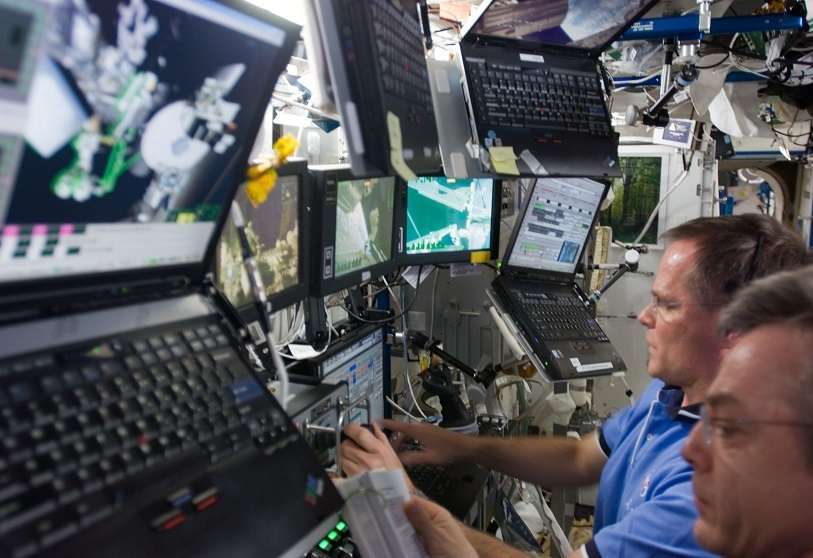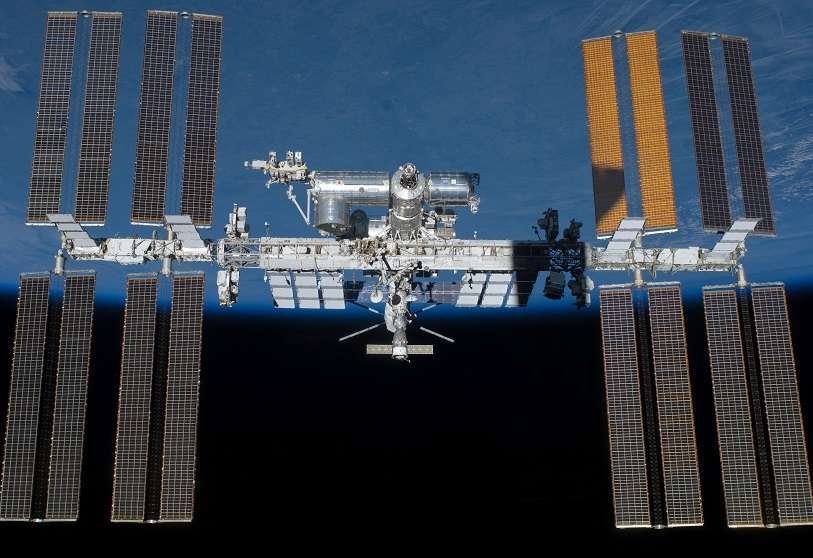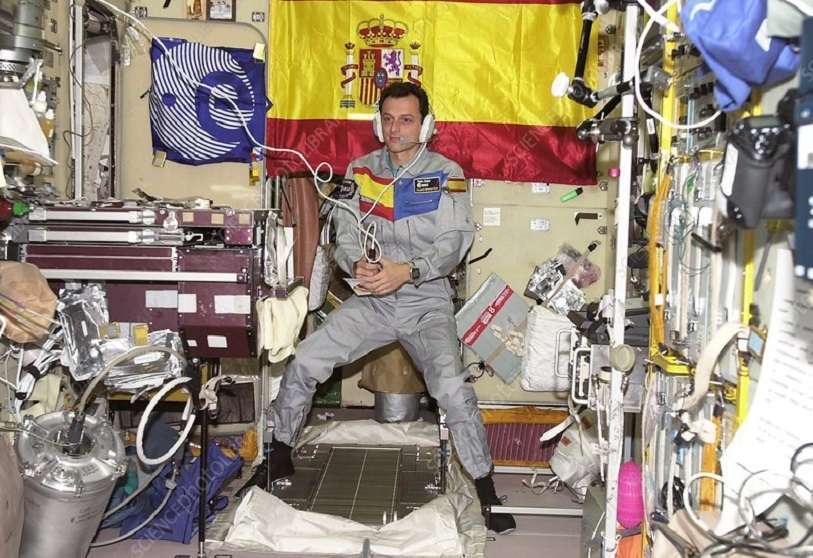The flat with the best views in the world celebrates its first 20 years

It has the best panoramic views you can imagine. A total of 240 men and women of 19 different nationalities, who have alternated their occupation for periods of three to six months, can confirm this. All of them have had to extend the facilities that have given them shelter and keep them in useable condition. In return, they have enjoyed the privilege of contemplating the Blue Planet at a speed of over 27,000 kilometres per hour and watching the sun rise and set every 90 minutes, no less than 16 times every 24 hours.
It is the International Space Station or ISS -acronym for International Space Station-, the biggest puzzle of all time built in space and inhabited since its first three inhabitants arrived on 2 November 2000. This intergovernmental cooperation project between the space agencies of the United States (NASA), Russia (Roscosmos), Japan (JAXA), Canada (CSA) and the European Space Agency (ESA), of which Spain is a member, has the political merit of never having been tarnished by the crises and clashes between Washington and Moscow.
Its tenants arrive with no rental contract in hand, but they have official documents authorising them to live, eat, sleep and, above all, work on board in experiments. One of their most uncomfortable, but essential, tasks is space travel. Officially known as extra-vehicular activities or EVA, most of them are for carrying out tasks to support the orbital complex or to extend its complicated structure. Around 250 EVAs have already been carried out, mostly by Americans and Russians. Christina Koch and Jessica Meir were the first two women to go abroad, in October 2019.

The last to reach the ISS was Expedition 64, comprising the Russians Sergei Ryzhikov and Sergei Kud-Sverchkov and the American Kathleen Rubins, who have been on board since 14 October for a six-month stay. Together with their three colleagues, they are housed in a modular, interconnected space some 110 metres long and 50 metres wide, the main living area of which is made up of eight pressurised cylinders. To ensure that all the equipment on board works, it has numerous solar panels that provide around 240 kilowatts of electricity. Four of them are as long as an Airbus A-380 large passenger aircraft.
Of the 240 tenants who have passed through, 151 have been Americans - including 28 women - and NASA is by no means the largest contributor to the project. It is followed by the Russians - 47 men and one woman -, the Japanese - 8 men and one woman - and the Canadians, with 7 men and one woman.
Europeans number 18, less than half the number of Russians. Most are Italian - 4 men and 1 woman -, French - 3 men and 1 woman - and German, with 3 men. Belgium, Denmark, the Netherlands, the United Kingdom, Sweden and Spain have each sent one astronaut, which in the case of Spain was Pedro Duque, the current minister for science and innovation, who spent 10 days on board the Cervantes mission in October 2003.

Other nations have also wanted one of their nationals to see the world from above, such as Brazil, Kazakhstan, Malaysia, South Africa and the United Arab Emirates. In short, 206 men and 34 women up there have to do a minimum of two hours of physical exercise a day to compensate for the loss of bone and muscle mass they suffer in orbit. NASA quantifies that its construction and operation requires a total investment of more than 100 billion euros, but that it is already estimated to reach 150 billion. The European contribution is currently estimated at around 8 billion.
The various modules that make up the ISS serve as a refuge for the astronauts who inhabit it and their fellow cosmonauts, the designation used by the Russians to describe their travellers in the cosmos. Permanent crews of six, which in critical situations are reduced to three, carry out their activities in the laboratories where they test with themselves, other living beings and materials their ability to survive or resist under the practical absence of gravity, which is known as micro-gravity.

For example, research is carried out on how to attenuate the behaviour of plants and fluids in microgravity, as well as that of objects that burn and produce flames in the form of bubbles. It has also been possible to recycle 93% of the water used in the ISS and thus reduce dependence on its transport from the ground. In total, more than 4,000 researchers from around 100 countries have conducted more than 3,000 experiments, a third of which have been returned to land so that their promoters can verify the results.
The ISS was the brainchild of the Reagan Administration. The Hollywood actor who became president in January 1981 announced in 1984 his wish to build a large space station which he called Freedom. The United States sought and obtained international cooperation from its supporters and after several reconfigurations of the initial idea and a change of name, Boris Yeltsin's Russia agreed to be part of the project despite its economic collapse.

The agreement was signed in January 1998, enabling the Kremlin to contribute its extensive experience in the Salyut and Mir space stations, the latter of which was destroyed in March 2001. The construction of the ISS began in November 1998, when the first piece of the space puzzle, the Russian control module Zarya (dawn in Spanish), was sent into orbit by a Russian Proton launcher.
Step by step, the different parts and interconnections of the frame that holds the astronauts' work modules, which according to NASA weigh a total of some 420 tonnes, have been assembled: the American laboratory Destiny (2001) and the expandable spherical Bigelow (2016); the Russian Zvezda (2000), Poisk (2009) and Rassvet (2010); the Japanese Kibo (2008); the Canadian robotic arm Canadarm2; the European Columbus (2008), the 360º panoramic window Cupola (2010) and the Italian Leonardo (2011). Eight mooring points allow the berthing of as many space capsules from Russia, Japan, Europe and the United States, several of which are fixed to the ISS to evacuate the occupants in case of emergency.

The ISS is located in the so-called low Earth orbit, at an altitude of about 418 kilometres, approximately the same distance by motorway that separates Madrid from Badajoz or Castellón de la Plana. The odyssey began when the Russian space capsule Soyuz TM-31 carrying cosmonauts Yuri Gidzenko and Sergei Krikalev and US astronaut Bill Shepherd docked with the Russian module Zvezda, one of the three structures which on 2 November 2000 formed the incipient ISS.
Since then, the orbital complex has been continuously inhabited, which is a feat in a project that took many years to get off the drawing board of NASA and begin to become a reality. After the first 20 years of occupation, it is still unknown how long it will remain in orbit with astronauts inside. The United States Congress has given its approval for the project to continue to be funded and to send astronauts until 2024, but it is highly doubtful that it will authorise NASA to allow the ISS to continue to be inhabited for another two decades, until 2040.

The powerful agency that Jim Bridenstine, 45, has been piloting since April 2018, intends to gradually move from having a single intergovernmental complex like the ISS to supporting the construction of privately funded space stations, with NASA as one of its clients. But this is no easy task.
Despite the fact that the Agency has been encouraging projects submitted by companies and individuals over the last few years with aid, the demand for commercial facilities in low-Earth orbit like the ISS presents enormous difficulties. And it still does not attract large and small investors to risk their capital in building and operating orbital complexes.

According to Phil McAlister, NASA's director of commercial space flight programs, "operations on the ISS will be phased out as sustainable private space stations come on line". In his opinion, the Agency needs now and in the future to have "a scenario in which it can conduct human research, house crews or make technological developments under conditions of absence of gravity or artificial gravity".
Space is still a sector that requires very high investments, which means that governments must get involved in order to meet the major challenges, such as building and operating a space station or exploring the cosmos. NASA engineers have not yet reached any definitive conclusions as to whether long linear rotating structures are the solution to counteract the harmful effects of micro gravity on the human body, particularly in the case of long interplanetary travel or stays, the first targets of which are the Moon and then Mars.









